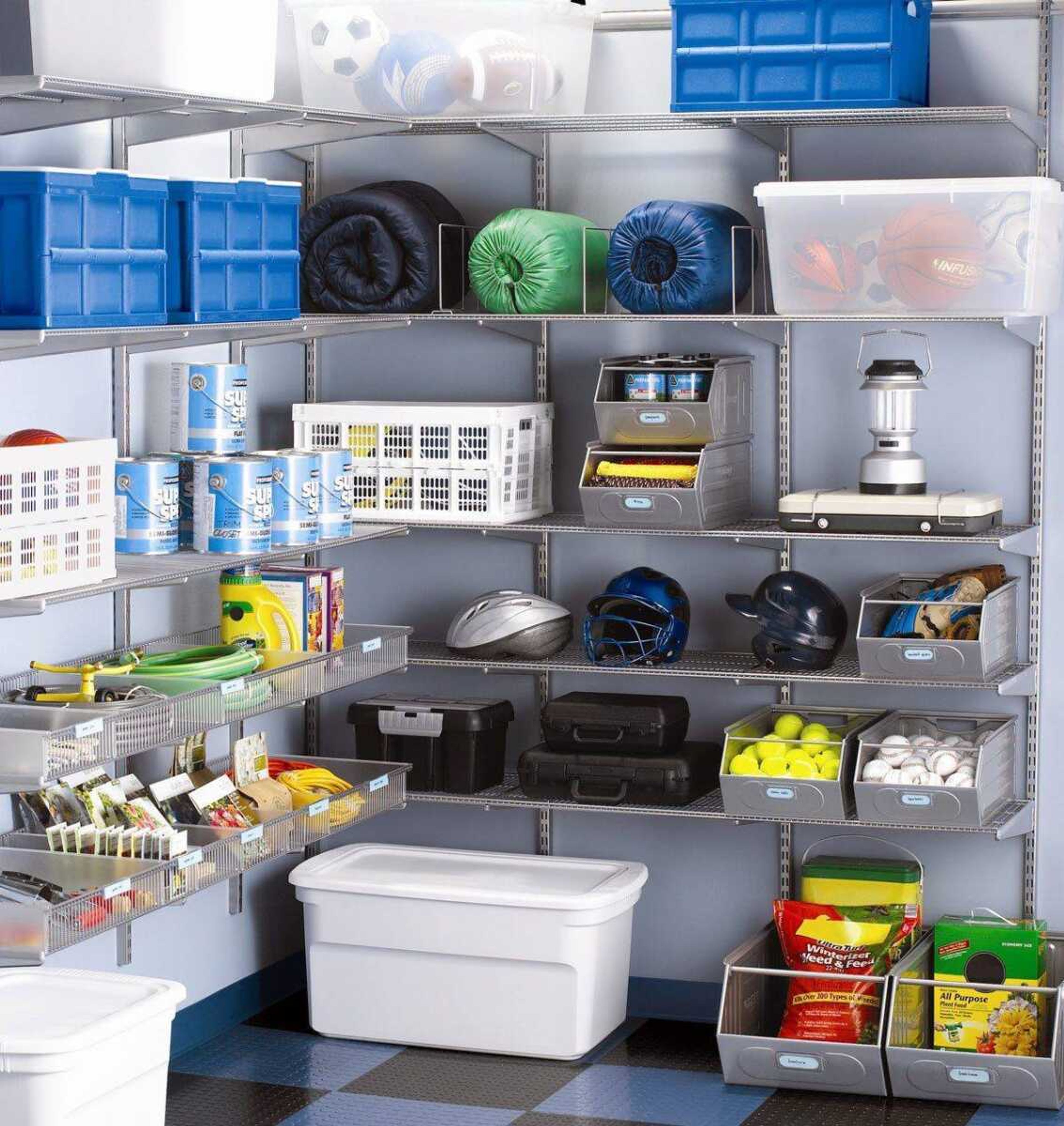Fall's a good time to tune up the garage
For many families, the end of summer means it's time to put away the inflatable kiddie pools, camping equipment and gardening tools for the season. If you plan to shove this gear into arbitrary piles around the edge of the garage, you're not alone: Many Americans say the garage is the most disorganized room in their home, according to the International Association of Business Organizing...
For many families, the end of summer means it's time to put away the inflatable kiddie pools, camping equipment and gardening tools for the season.
If you plan to shove this gear into arbitrary piles around the edge of the garage, you're not alone: Many Americans say the garage is the most disorganized room in their home, according to the International Association of Business Organizing.
But a messy garage is not just unsightly, it can cost you money. People with cluttered garages tend to waste time searching for misplaced items and end up re-buying things they already own, said Erica Ecker, a professional organizer in New York City.
They also risk injury. Garages often hold hedge trimmers, table saws, toxic chemicals and other dangerous items alongside children's scooters and bikes.
An overstuffed garage puts your vehicles at risk, too. When the car door can't swing open without hitting a wheelbarrow or workbench, it gets dented and dinged. Monica Ricci, a professional organizer who makes appearances on the HGTV show "Mission: Organization," said that in many homes, garages are so filled with clutter they stop serving their main purpose.
Whether your garage is slightly disheveled or looks more like an overstuffed storage unit, the changeover to fall is an ideal time to give it a tuneup using these steps from organizational experts:
1. PREPARE. Tackling a junk-filled garage is physically demanding. Ecker advises pacing yourself and setting a schedule in advance. Consider renting an outdoor storage container so your belongings aren't sitting in the driveway or in the house for a month while you finish reorganizing the garage.
Enlist help. If you can't afford a professional organizer, recruit relatives or offer to swap labor with a friend who is planning a similar household project. An assistant can help you move heavy objects, keep you motivated and ask objective questions ("Do you really use that?"), said Ellen Kutner, who runs the company Simply Organized in Poughkeepsie, N.Y.
2. EMPTY AND SORT. Empty the contents of the garage out into the driveway and begin sorting it into piles, grouping like things together. Categories will vary by household, but you may start with sporting equipment, tools, hardware, car care, lawn care, seasonal, toys and household goods.
3. PURGE. The next step -- paring down your stuff -- is the most important. First, toss anything broken or expired. Return borrowed items to their owners. If you own multiples of something, donate the duplicates or sell them. Analyze how often things get used. Are you storing camping equipment from when your college-age kids were Cub Scouts? Time to get rid of it.
Find ways to downsize bulky items. For example, Ecker says, rather than storing mostly-empty paint cans for future touch-up jobs, keep a Mason jar-size container of each leftover paint, labeled with the brand, color name and finish.
4. SPRUCE UP THE SPACE. While the garage is bare, give it a thorough cleaning. Kristin Long, who owns the company The Organizational Specialists, recommends adding durable floor tiles or a fresh coat of paint. Making the garage more visually appealing will inspire you to keep it tidy. While you're at it, wipe down all the warm-weather gear that is going to get stashed for the next eight months.
5. BUILD UPWARD. Look at what's left and figure out where it will live in the garage, placing the most frequently used stuff in the most accessible locations. Install shelving to add vertical storage and get things off the floor. Clear bins are best so you can see what's inside. Ecker recommends the ELFA system sold by The Container Store, saying it's easy to install and adjust. If you're feeling less ambitious, the snap-together plastic shelves sold at any big-box store work fine.
Use hooks to hang ladders, bikes, shovels and rakes. Mount pegboard on the wall to keep tools out of kids' reach, and put dangerous substances like pesticides on high shelves. The garage ceiling is underutilized, Ricci says, but with a ceiling storage system such as Hy-Loft, Racor Hydraulics Lifts or Onrax, you can stash stuff you only access once or twice a year, such as sleds or cushions for outdoor furniture.
If you do woodworking or crafts, metro shelving on wheels gives you the flexibility to move supplies into the center of the garage or driveway. Ecker recommends the Uline brand.
6. LABEL EVERYTHING. Label containers using a Sharpie or other permanent method. Be sure to label the container, not the shelf, so when bins get moved, items are still put in the correct place, Long says.
7. MAINTAIN. An organizing project is only as good as its upkeep, Kutner says. Just as you take the car in for an oil change every 5,000 miles, when you start to see clutter accumulating, it's time to do garage maintenance. If you buy something new, something else has to go. When you take an item out to use it, put it away immediately after you're done.
Connect with the Southeast Missourian Newsroom:
For corrections to this story or other insights for the editor, click here. To submit a letter to the editor, click here. To learn about the Southeast Missourian’s AI Policy, click here.









